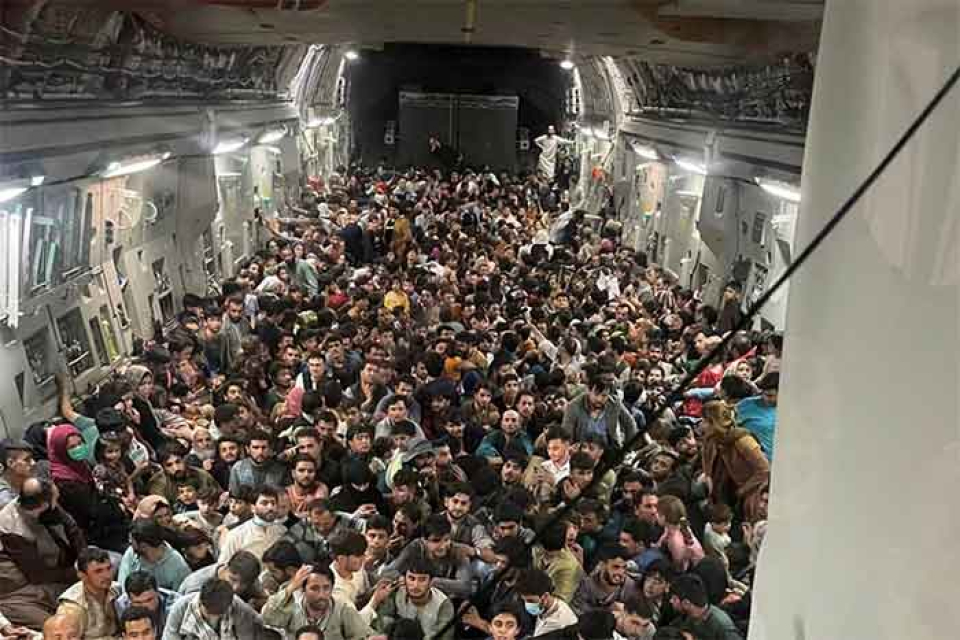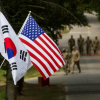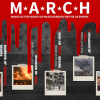
Succeeding administrations have a chronic habit of blaming their predecessors. The Biden administration has been most particular on the issue, taking every chance to attack former President Donald Trump for the ills of his tenure. But the effort to almost exclusively lay blame at Trump’s door for the US fiasco in Afghanistan was a rich one indeed, given the failings of the George W. Bush and Obama administrations in that historically doomed theatre of conflict.
Revolutions, Leon Trotsky remarked, are always verbose. But so are failed wars, military campaigns and invasions. The greater the failure, the weightier the verbosity from the apologists. National Security Council Coordinator for Strategic Communications, John Kirby, as befitting his title, is just the man for the task.
In announcing the findings of the Biden administration into the withdrawal of US forces from Afghanistan in August 2021, Kirby proved infuriatingly bureaucratic, his address addled by management speak. “As you all know,” he told a White House press conference, “over these many months, departments and agencies key to the withdrawal conducted thorough, internal after-action reviews, each of them examining their decision-making processes, as well as how those decisions were executed.”
The briefing began as all praise for his own administration’s virtues (naturally). The President had made the right decision to leave Afghanistan (no mention that the paving had already been laid by Trump). “The United States had long ago accomplished its mission to remove from the battlefield the terrorists who attacked us on 9/11 and to degrade the terrorist threat to the United States from Afghanistan.”
Leaving Afghanistan placed the US “on a stronger strategic footing, more capable to support Ukraine and to meet our security commitments around the world, as well as the competition with China, because it is not fighting a ground war in Afghanistan.” We can all be assured that this half-sighted colossus, unshackled in Afghanistan, can pursue its mischief making elsewhere.
The finger-pointing duly follows. First, Trump is blamed for not having more troops in Afghanistan that needed to be withdrawn in the first place. There should have been more than the official number of 2,500 present, “the lowest since 2001.” Biden also “inherited a Special Immigrant Visa program that had been starved of resources.” The Trump administration-Taliban deal calling for the complete removal of troops by May 2021, lest the Taliban would resume its attacks on US soldiers, also comes in for a serve.
Then comes the issue of transitions, because they “matter”. Trump and his officials had asked about what plans for a security transition in Afghanistan would look like, or those to increase numbers in the Special Immigrant Visa program. “None were forthcoming.”
Kirby spends much time explaining how the events that unfolded in the dying days of the US garrison were unforeseeable. “No agency predicted a Taliban takeover in nine days.” Nor did they predict the fleeing of President Ashraf Ghani, that greatly reliable figure of US interests, “who had indicated to us his intent to remain in Afghanistan up until he departed on the 15th of August. And no agency predicted that more than – that the more than 300,000 trained and equipped Afghan National Security and Defense Forces would fail to fight for their country, especially after 20 years of American support.”
All these points are staggering from a historical viewpoint. They betray, not merely the delusion of Empire, but the stupidity and myopic nature of its emissaries. The lessons of Vietnam, and the Vietnamisation program pursued by the US towards its South Vietnamese allies in the latter stages of the Indochina War, were clearly of no consequence. All that mattered was belief and faith, terrible substitutes for solid evidence and field work.
The report, with the simple title U.S Withdrawal from Afghanistan, is an exercise in bleating and blame. “When President Trump took office in 2017, there were more than 10,000 troops in Afghanistan. Eighteen months later, after introducing more than 3,000 additional troops just to maintain the stalemate, President Trump ordered direct talks with the Taliban without consulting our allies and partners or allowing the Afghan government at the negotiating table.”
Involving the puppet Afghan government in any meaningful power-sharing arrangement with the Taliban was doomed from the start, a point that Trump, whether through insight or accident, stumbled upon. The Biden administration, on the other hand, persists with the chimerical notion that those the strained Pax Americana blesses are supposedly able and capable of maintaining peace in the face of a determined guerrilla fighting force.
As a corollary of that delusion, the report reiterates the fallacy of assuming that training, equipment and numerical superiority somehow overcome a lack of will, sound morale and determination. “The ANDSF had significant advantages. Compared to the Taliban, they had vastly superior numbers and equipment: 300,000 troops compared to 80,000 Taliban fighters.”
Trump was also to be blamed for “four years of neglect” that left “crucial systems” in a perilous state of “disrepair.” Refugee support services and the Special Immigrant Visa (SIV) program choked with 18,000 applications.
Biden emerges from the report a sage misled. “From the beginning, President Biden directed that preparations for a potential US withdrawal include planning for all contingencies – including a rapid deterioration of the security situation – even though intelligence at the time deemed this situation unlikely.” Instructions were given to all close advisers to draw up plans for the withdrawal; the National Security Council “hosted dozens of high-level planning meetings, formal rehearsals of the withdrawal, and table top exercises” examining various scenarios.
These evidently did not help. The collapse of the government in Kabul “unfolded,” as Avril Haines, Director of National Intelligence stated on August 18, 2021 “more quickly than [the Intelligence Community] anticipated.” But wait, there is more: “the collapse was more rapid than either the Taliban or the Afghan government expected.”
The evacuation effort itself was plagued with problems, though the report attempts to minimise Biden’s hand. He, after all, had been advised that “risks”, including keeping such access routes as the Abbey Gate open at Kabul Airport, were “manageable”. In the chaos that ensued, a suicide bomber killed 13 US personnel and 170 Afghans. A pre-emptive drone strike by the US military launched a few days later intended to neutralise another potential attack ended up killing 10 civilians.
The entire calamity was an example of an imperial, ruinous escapade left in a shambles. And the inability on the part of US departments and agencies to understand the durability of the Taliban and the conspicuous weakness of the regime in Kabul, showed yet again a monumental inability to identify the obvious.
Source: Counter Currents

















